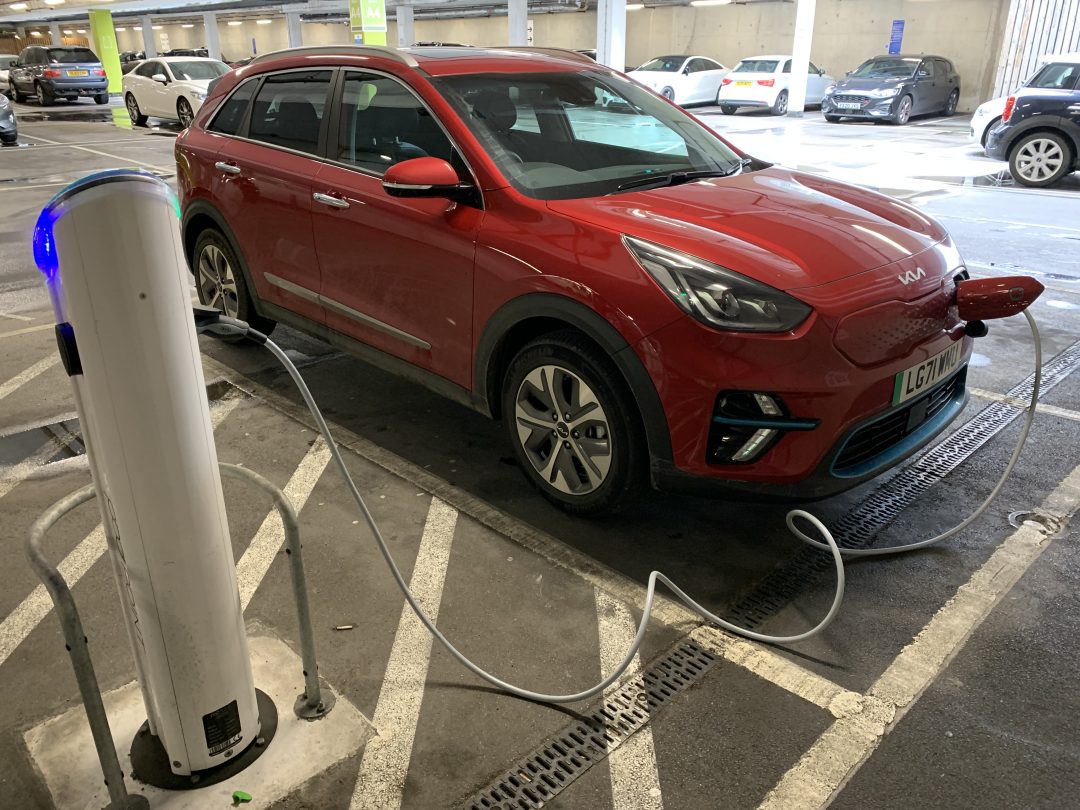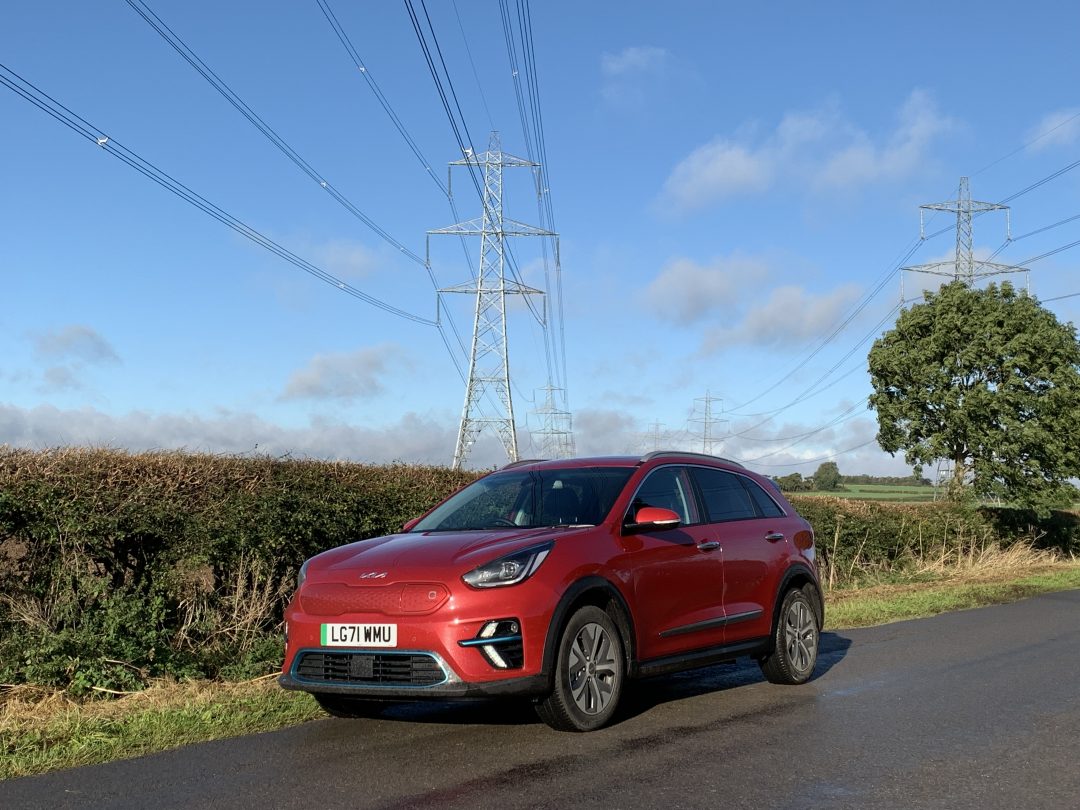Living with an electric car – what’s it really like? How many are sold? Grab a coffee and find out

Living with an electric car – what’s it really like? How many are sold in the UK and why the sales figures don’t tell the whole story? DAVID HOOPER reveals all – grab yourself a coffee!
THE Government and the motor industry are forcing us to abandon our beloved petrol and diesel engines and move to electric vehicles in just eight years’ time.
Electric cars, we’re told, are the future, but are they the here and now? A week with this fully electric Kia e-Niro has left me questioning that and given me quite a dilemma of conscience. On the one hand, I feel I should be adopting this “clean” new technology and writing about it as if it were the best thing since sliced bread, but as a committed petrolhead, short of time, yet with a practical mindset and a growing environmental conscience, it’s difficult to do so. But I have started recycling at home since the council kindly deposited an army of wheelie bins outside my house!
Let’s start by getting some perspective. Watch the TV ads and listen to the hype and you could easily believe that no one is buying petrol or diesel cars any more. It’s not true.
The latest sales figures published in January 2022 by the Society of Motor Manufacturers and Traders (SMMT) showed that 2021 was the most successful year in history for electric vehicle uptake as more new battery electric vehicles (BEVs) were registered than over the previous five years combined. That’s great, but it’s only 190,727 new BEVs. These joined Britain’s roads, along with 114,554 plug-in hybrids (PHEVs), meaning 18.5% of all new cars registered in 2021 can be plugged in. This is in addition to the 147,246 hybrid electric vehicles (HEVs) registered which took a further 8.9% market share in a bumper year for electrified car registrations, with 27.5% of the total market now electrified in some form.
But these figures can be misleading to the uninformed, as most “mild hybrids” rely predominantly on petrol or diesel engines as the main power source. Most Plug-In hybrids also rely mostly on petrol engines after their first 30 miles or so, and full hybrid cars don’t go very far at all on electric power alone, but hey, every little helps!
So let’s dig a bit a little deeper into the figures, remembering my explanations above.
The SMMT says petrol-powered vehicles, including mild hybrids (MHEVs), remain Britain’s most popular powertrain, still accounting for 58.3% of all new cars registered in 2021, with diesel-powered cars including MHEVs making up 14.2% of the market, followed by BEVs at 11.6%, HEVs at 8.9% and PHEVs at 7.0%.
So to translate that, only 11.6% of new car sales were cars which rely solely on battery power. That’s not many.
About those batteries. Electric cars are powered by lithium batteries. Mining lithium and making it into batteries is anything but a clean, environmentally friendly process. Quite the opposite. We’re told there isn’t enough lithium in the world to power all the cars that would be needed if the world was to switch in its entirety to electric vehicles. Oh yes, and then you learn that the world’s biggest reserves of untapped lithium are in, err, Afghanistan.
Then there’s disposing of the batteries at the end of their useful life. Then we have to manufacture the electricity to power the cars with… power stations, some nuclear, and some wind power as the North Sea is growing a forest of wind turbines.

During my few days with the e-Niro, the weather was good, the sun was shining, there was a lovely Indian summer – and there was no wind. The wind farms weren’t generating enough electricity, so the coal-fired power stations had be fired up to keep the National Grid going, and only a small percentage of people are currently running electric vehicles. This is 2021 in Great Britain and we are threatened with power cuts this winter!
Then there are the practicalities of living with an electric car. At the moment, that very much depends on what you want to do with it. If you have a charging point fitted to your house, you can plug your car in, charge it up overnight, and go about your business the next day. Which is great, so long as you don’t venture further than half the range of your car – so you can get home again without having to recharge it.
I don’t have one, but that’s fine. I plugged the car into a normal 13amp socket and it started charging. The car had 30% charge left when I hit the switch and it told me it would be fully charged in… 23 hours! But… I had to go to work in the morning!
As things stand, recharging your car when you’re out and about is the equivalent of playing range anxiety Russian roulette! It’s a nightmare!
It seems every charging point is operated by a different company, which requires you to register for their app on your phone, and pay by credit card, before you can charge your car. There are some free ones though, which is great, at the moment. But how long will that, and the tax benefits of driving electric vehicles last?
The Government will have to replace the millions lost in road tax and fuel duty when everyone has an electric car somehow. I found a free one in Tesco’s car park in St Stephens shopping centre, in Hull, plugged the car in, it started charging, and off I went with a satisfied sense of achievement and a smug face.
Electric cars aren’t so difficult to live with after all, I thought. But on my return, the car’s range had only increased by about two miles. After some investigation, I realised the Podpoint charger had cut off after 15 minutes because I hadn’t gone onto the app and told it I had connected my car to it. Surely the charger would know there’s a flipping car plugged into it? So I’d wasted an hour-and-a-half and spent money on things I didn’t need in Tesco while I waited for a “free” charge – which didn’t happen. Brilliant! Of course it was a newbie error, but no less frustrating – I was just glad I wasn’t desperate for power, or it would have been a bigger problem.
Not so smug face!
Had it worked as expected, the 7kW output would still have taken more than three hours to charge my car, which still had a third of its capacity remaining when I plugged it in, so it wasn’t the complete disaster it might have been.
I have a friend who has a fully electric Mini and she loves it. She has done 26,000 miles in it, and has perfected the art of living with an electric car. Her husband, however, has just got an Audi e-Tron, a lovely piece of kit, with a good range, but last night he was recounting to me how he spent an hour driving around the south of England trying to find a working charge point. Several he tried were either occupied or out of service at several locations. Then he had to wait another hour for the car to charge up enough to get him home.
And he is not alone. Numerous motoring journo colleagues regularly bemoan similar experiences. This is what the Government and motor industry PR machines do not tell unsuspecting customers! In America, people have been known to shoot each other in rows over charging points. Fortunately, the worst I’ve heard of in this country was a traditional punch-up!
Be in no doubt, the infrastructure in this country is currently inadequate to cope with the mass adoption of electric vehicles, and there is little sign of this being properly addressed by the Government or local authorities. What is required are banks of high output 150kW fast chargers which will charge the latest big capacity batteries in under half an hour. They also need standardising – so one payment card, or one app allows access to all chargers. It will require legislation to make that happen as there are so many different companies in the marketplace, with more no doubt coming soon as sales inevitably grow.
Electric cars then, are currently (pardon the pun) a mixed blessing – the industry is in its challenging adolescent phase, and things will certainly improve as it matures – but if it wants to convert busy, time-challenged petrolheads like me to buy one as my preferred mode of transport, it needs to grow – and quickly!
Read our full review on the Kia e-Niro.
